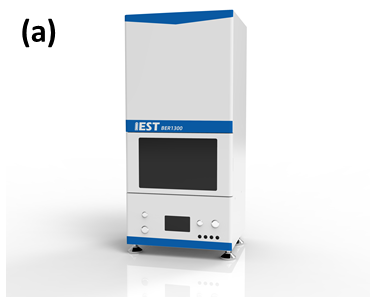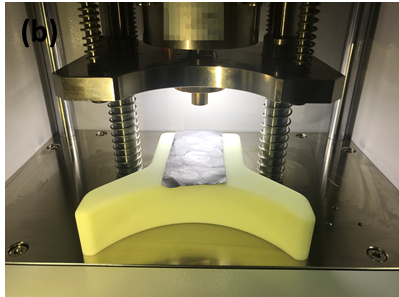Assessment of the Resistance Performance of Carbon-coated Aluminum Foil
The current collector, as the carrier that conducts electrons and carries active materials inside the lithium-ion battery, plays an important role in the final performance of the battery. Aluminum foil is the most used positive current collector. In order to improve the rate, cycle and service life of the electrode, some conductive coatings are coated on the surface of the aluminum foil, which can effectively improve the interface contact resistance between the current collector and active particles, and improve the contact resistance between the active material and the current collector. Excellent bonding strength, reducing the peeling off active particles during electrode cycling. The coating of carbon-coated aluminum foil generally includes conductive carbon black, graphene, carbon nanotubes, etc. The formula of the carbon-coated layer, coating thickness, coating uniformity, etc. will also affect the effect of the primer.
In this paper, the pole piece resistance test method is used to compare the resistance difference of carbon-coated aluminum foils with different formulations and different coating thicknesses and analyze the uniformity of the bottom-coated pole pieces.

Figure 1. Schematic diagram of the effect of carbon-coated current collector on the performance of the battery cell
1. Experimental Equipment and Test Methods
1.1 Experimental equipment: Electrode resistance meter, model BER1300 (IEST), electrode diameter 14mm, can apply pressure 5~60MPa. The device is shown in Figures 2(a) and 1(b).
|
|
Figure 2. (a) Appearance of BER1300; (b) Structure of BER1300
1.2 Samples to be Tested: three formulations of primer materials, two types of carbon-coated aluminum foils with different thicknesses, empty aluminum foil, carbon-coated aluminum foil and pole pieces coated with active materials.
1.3 Test Method: Cut the pole piece sample to be tested into a rectangular size of about 5cm×10cm, place it on the sample stage, set the test pressure, pressure holding time and other parameters on the MRMS software, start the test, and the software will automatically read the pole piece Thickness, resistance, resistivity, conductivity, and other data.
2. Data Analysis
The carbon-coated aluminum foils with different formulations were tested. The thickness of the empty aluminum foil was 10 μm, and the thicknesses of the two carbon-coated layers were 7 μm and 4 μm respectively. The resistance of the carbon-coated aluminum foil of the formula varies greatly, ranging from tens of mΩ to tens of Ω, and from the uniformity of resistance at different positions of a single pole piece, the uniformity of carbon-coated aluminum foils of different processes is also very different, such as 4μm -R(Ω)-1 and 7μm-R(Ω)-1, the resistance box diagrams of the two charcoal-coated aluminum foils are wider, indicating that the resistance uniformity at different positions is poor, which is related to the fact that the coating is too thin, and leakage may occur It is related to the uneven distribution of coating or carbon materials.
Analyzing the data in Figure 3(c), the conductivity of the empty aluminum foil is the best. When the carbon-coated layer and the active material are added, the resistivity of the pole piece measured by the two-probe principle increases gradually, which shows that The addition of the coating will introduce contact resistance between the particles, which will weaken the conductivity of electrons. Although it is generally believed that adding a carbon coating layer on the surface of aluminum foil will increase the conductivity of the electrode, this is mainly because the carbon coating layer increases the surface roughness of the aluminum foil and makes the contact between the active material particles and the current collector better. Thick or poor coating uniformity will also affect the conductive uniformity of the active material coating electrode.
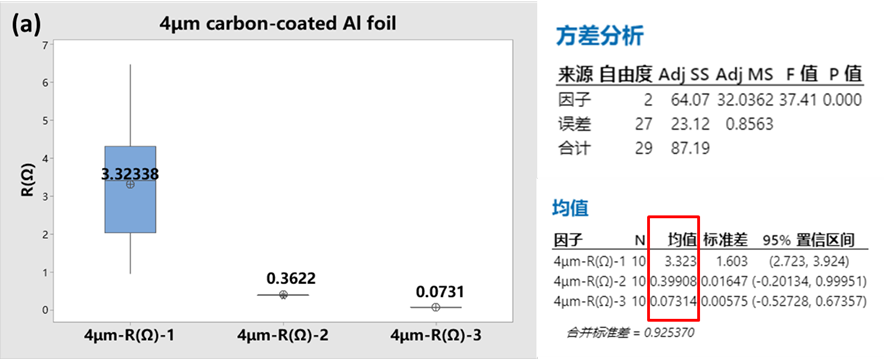
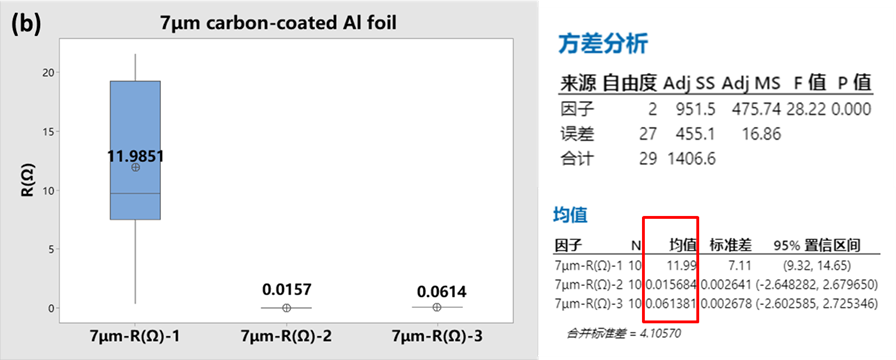
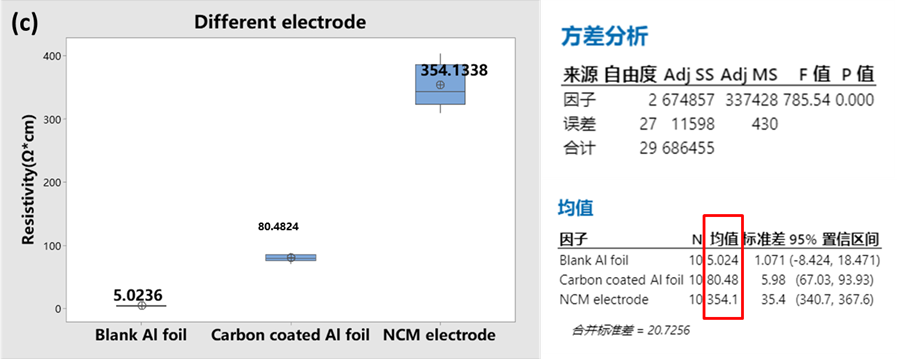
Figure 3. (a) Foil resistance with a carbon-coated layer thickness of 4 μm; (b) Foil resistance with a carbon-coated layer thickness of 4 μm; (c) Electrode resistivity in three different states.
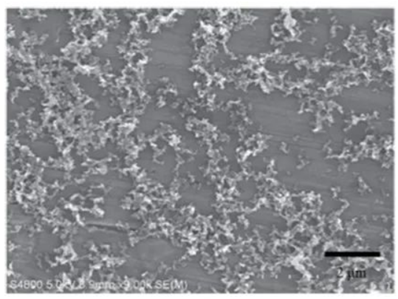
Figure 4. Schematic diagram of surface morphology of carbon black coated aluminum foil
In summary, adding an effective intermediate layer between the active material and the metal current collector, in addition to improving the interfacial contact resistance, also has the following potential synergistic benefits: (1) A chemically and electrochemically stable conductive layer can serve as an effective The diffusion barrier prevents the diffusion of oxygen generated due to electrolyte decomposition and/or side reactions during lithium ion intercalation reactions, and effectively prevents the formation of an oxide layer on the surface of the metal current collector, thereby preventing degradation; (2) A conductive layer with a reasonable formulation has Good conductivity, can form a large area of contact, the current collector and the active coating interface resistance is low, which is conducive to the rapid charge transfer process; (3) the flexibility and mechanical buffer of the conductive layer can enhance the adhesion of the physical interface Efforts have been made to minimize the problems associated with the gradual loss of contact area caused by stresses generated at the interface during long-term cyclic reactions. By designing and developing unique conductive coatings, experiments have demonstrated that conductive interfacial layers can significantly improve electrochemical performance, such as specific reversible capacity, capacity retention, rate capability, etc.
3.Summary
Carbon-coated aluminum foil is a positive current collector that is gradually being used by various battery manufacturers. The evaluation of different formulations and processes of carbon-coated aluminum foil also plays an important role in the development of current collectors. By testing the resistance parameters of carbon-coated aluminum foil, it can help evaluate the differences in formulations and processes, and at the same time help lithium battery developers monitor the stability of the primer process.
References
1.Busson, C, Blin, M.A., Guichard, P., Soudan, P., Crosnier, O., Guyomard, D., & Lestriez, B. (2018). A primed current collector for high performance carbon-coated LiFePO4 electrodes with no carbon additive. Journal of Power Sources, 406, 7-17.
2.Chen Peng, Ren Ning, Ji Xuemin, et al. Research on the Application of Carbon-Coated Aluminum Foil in Graphite/LiFePO4 Batteries[J]. New Energy Progress, 2017, 5(2): 157-162.
3.Li Min, et al. The effect of carbon-coated aluminum foil on the performance of lithium iron phosphate batteries [J]. Energy Storage Science and Technology, 2020, 9(6), 1714-1719.

